Welcome aboard our extensive exploration into the world of lab-created diamonds. You’re here to learn more about this fast-growing area. BrighterGuide is here to make sure you get all the info you need.
In this piece, we’ll traverse through the mesmerizing realm of lab-grown diamonds, stacking them against their earth-mined rivals. We’ll also delve into the elements influencing their pricing and potential for resale.
Alright, are you set? Let’s dive in and uncover the true worth of lab-created diamonds.
Related article: Exploring the Colors of Lab-Created Diamonds
Key Takeaways
- Lab-grown diamonds are more affordable than natural diamonds but have a lower resale value.
- The choice between lab-grown and natural diamonds often depends on personal preferences, budget, and ethical considerations.
- Lab-grown diamonds offer an environmentally-friendly and ethically sourced alternative to earth-mined diamonds.
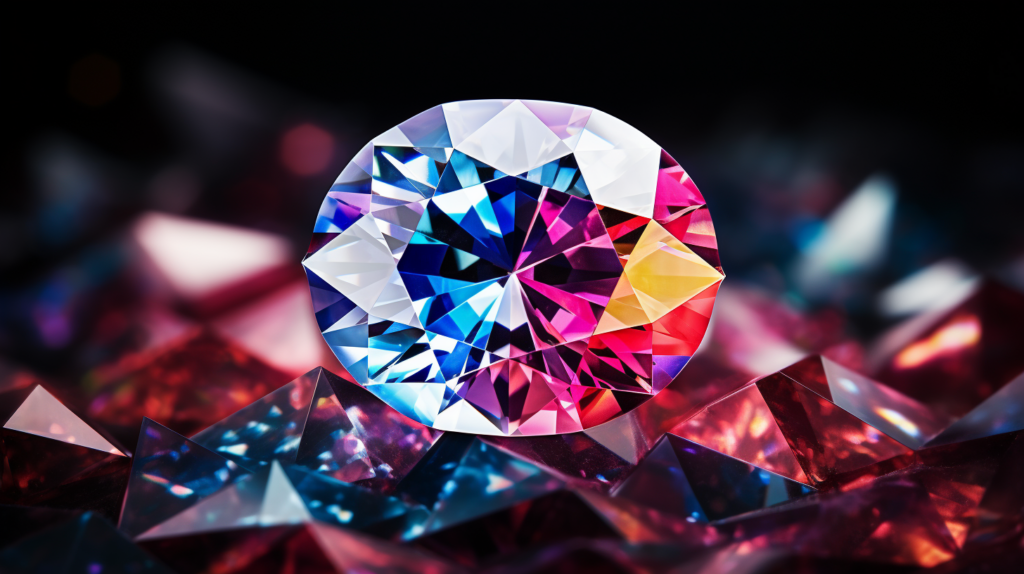
Overview of Lab-Created Diamonds
Let’s initiate our discussion with an introduction to lab-created diamonds and what makes them special.
Often termed lab-grown diamonds, these are genuine diamonds, albeit born in a sophisticated laboratory setting. Mirroring natural diamonds, they possess identical chemical and visual properties, rendering them virtually identical to the untrained eye. The method to craft these jewels involves mimicking the carbon atom arrangements seen in natural diamond crystals.
Pricing for these diamonds isn’t fixed. Various elements like shape, cut, carat size, hue, clarity, and certification impact the final price tag. While round brilliant diamonds generally command the highest prices, the diamond’s cut is paramount in determining both its aesthetic appeal and cost. Intriguingly, lab-grown diamonds, on average, tend to be more wallet-friendly than their natural counterparts.
These lab diamonds are crafted in a lab setting using advanced technologies. Here’s the impressive part: they mirror the exact chemical and visual attributes of earth-mined diamonds. To the everyday person, distinguishing between the two can be a real challenge. The production of these diamonds involves replicating the carbon structures found in natural or rough diamonds.
Classifications of Lab-Created Diamonds
Now, talking about the price of lab diamonds, it’s not a one-size-fits-all situation. The final tag gets influenced by numerous aspects like diamond shapes, cuts, carat weight, the hue or color grade, clarity, and certification. For instance, James Allen, a prominent online retailer, offers an array of these diamonds in various specifications. Intriguingly, when comparing the average price of lab diamonds and their natural counterparts, lab diamonds generally present a more affordable price.
However, the lab-grown diamond market has been in the limelight due to its dynamic nature. The fluctuation in lab diamond prices can be attributed to various factors in the diamond industry. But, a noteworthy point is the ethical issues tied to earth-mined diamonds, often termed conflict diamonds. Lab diamonds present a cleaner slate, free from such concerns.
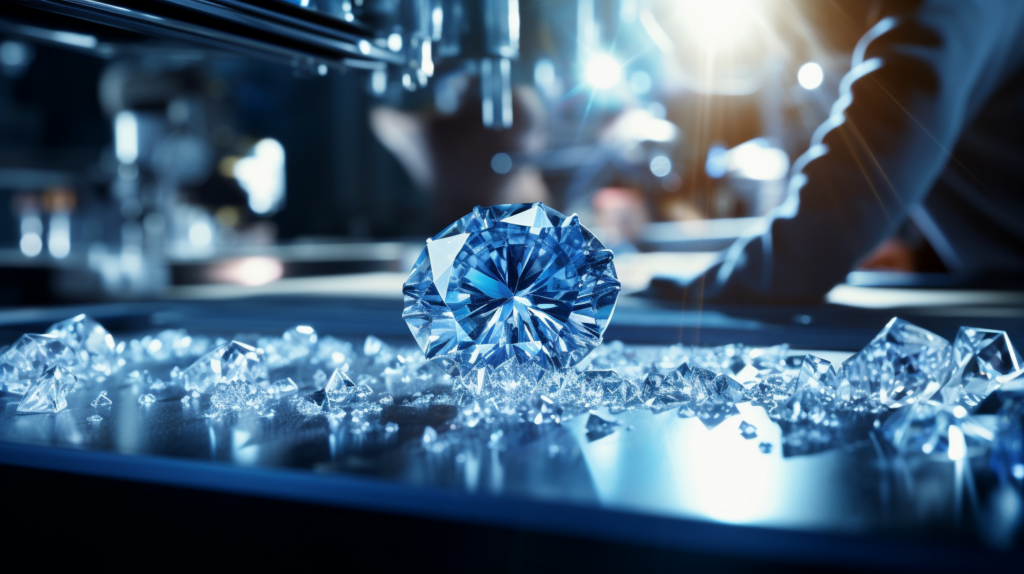
Furthermore, the appeal of lab diamonds isn’t confined to the usual colorless diamonds. The market offers colored diamonds, including hues of blue and other enchanting shades. For those eyeing larger diamonds without burning a hole in their pocket, lab diamonds present a golden opportunity. Moreover, considering the diamond cutters’ expertise, the finished product is nothing short of perfection.
In recent times, the rise of retailers like Brilliant Earth and James Allen has bolstered the lab diamond engagement ring trend, showing modern consumers’ shifting personal preferences. This trend can be attributed to increasing awareness of environmental impact, carbon emissions, and ethical diamond choices.
Let’s now shift gears to draw a comparison between lab-grown and natural diamonds, dissecting the nuances in their costs and values.
Lab-Created Diamonds Vs. Natural Diamonds
Pitted against natural diamonds, one might ponder on the true value of lab-grown diamonds and their cost-effectiveness.
Though lab-created diamonds mirror the chemistry and appearance of natural diamonds, their resale quotient often lags. They typically sport a price tag lower than natural diamonds, but the future appreciation potential of natural diamonds shouldn’t be overlooked.
Are Lab-Grown Diamonds Worth Anything
In the resale arena, lab-grown diamonds usually don’t fetch much, especially when juxtaposed against natural diamonds. Here’s why:
- Price Dynamics: While they’re generally more affordable initially, their resale deficiency can eclipse these initial savings.
- The Synthetic Label: Tagged as synthetic diamonds, they might not radiate the same charm for certain aficionados.
- The Cubic Zirconia Effect: With an influx of diamond imitators like cubic zirconia, the resale potential for lab-grown diamonds diminishes further.
- Market Volatility: The lab-grown diamond domain has seen price swings recently, potentially denting their resale worth.
- Carat Concerns: Larger lab-grown diamonds might see reduced resale traction as purchasers could lean towards similarly sized natural diamonds.
Pondering these facets, it’s vital to assess the long-haul value and resale possibilities of lab-grown diamonds prior to acquisition.
Are Lab-Grown Diamonds Cheaper Than Natural Diamonds
Generally, lab diamonds are more pocket-friendly than real diamonds. However, it’s important to remember they don’t sell for as much later on. The price of lab-grown diamond prices usually changes based on things like diamond shapes, how the diamond is cut, its size in carats, color, clarity, and certification.
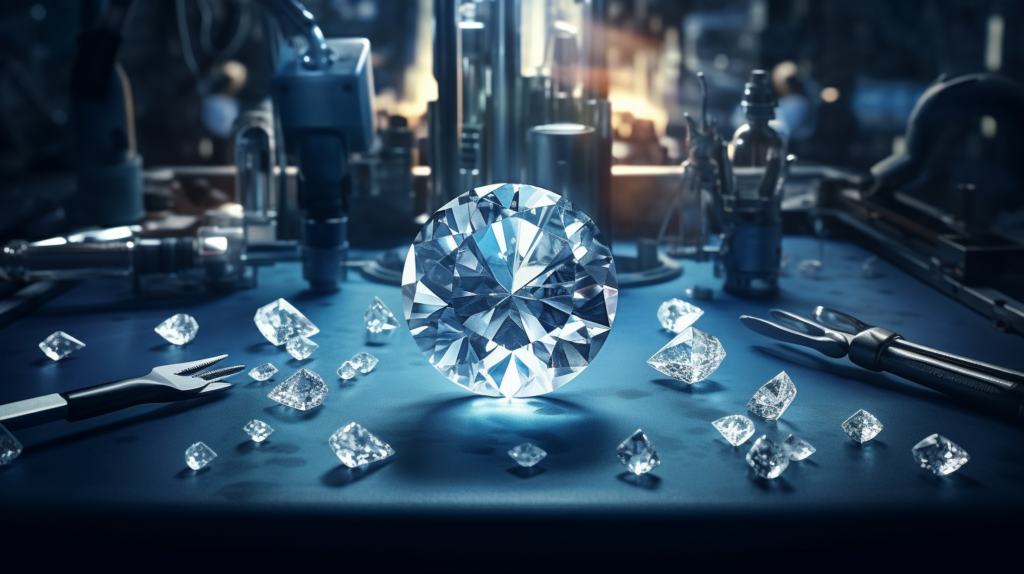
Even though lab diamonds might be easy on your wallet at the initial purchase, they often have a low resale value. So, even if you save some bucks now, you might not get much if you decide to sell it later.
On the other hand, real diamonds have been consistently rising in price throughout history. They maintain their value over time. When you compare the price of lab diamonds and real diamonds, think about the future. Real diamonds may cost more today, but they might be a smarter choice for the long term.
Which Is Better? Lab-Grown or Natural Diamonds?
When considering diamonds for that perfect engagement ring or a brilliant diamond necklace, the choice between lab-grown and natural diamonds is often at the forefront. Both have their unique allure. Natural diamonds, sourced from the earth’s depths, carry age-old legacies and traditional appeal.
Their price per carat is often higher due to the mining processes involved. Lab-grown diamonds, on the other hand, are modern marvels. Made using advanced diamond seeds in specialized labs, they closely mimic natural diamonds in beauty and structure.
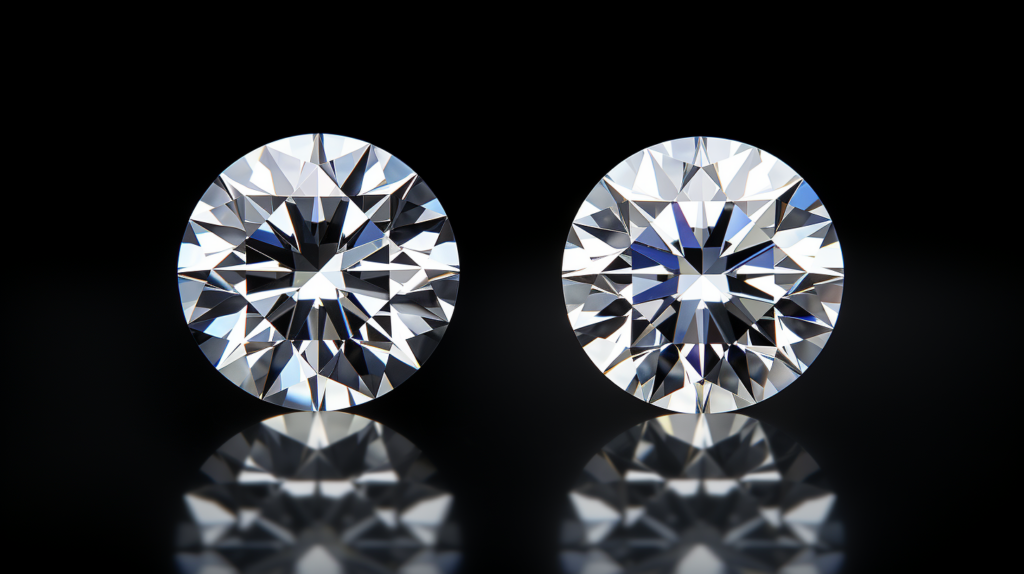
Retailers like James Allen and Brilliant Earth offer both options. Notably, the average price of lab diamonds is generally lower, making them an ethical diamond choice for budget-conscious consumers. Moreover, they have a lesser environmental impact, addressing some ethical concerns related to earth-mined diamonds. In the end, the choice boils down to personal preferences and values.
Acquiring Lab-Grown Diamonds Today
Today’s consumers are spoilt for choice when shopping for lab-grown diamonds. The market landscape has broadened vastly, with several trusted retailers in the fray. Here are some pointers:
- Blue Nile Experience: Blue Nile, a renowned digital storefront, boasts an expansive lab-grown diamond collection. Their platform offers a deep dive into every diamond’s specs, from carat weight to color.
- Go Big on a Budget: Lab-grown diamonds present a golden chance to snag larger gems at prices more benign than natural diamonds.
- Eco-friendly and Ethical: Being a product of labs, these diamonds sidestep the environmental and societal pitfalls of mining. Opting for lab-grown ensures you’re steering clear of the murkier sides of the diamond trade.
- Diverse Color Palette: Beyond classic white, lab-grown diamonds come in a spectrum of colors, from blues and yellows to pinks.
- Clarity in Origin: Contrasting natural diamonds, the journey of a lab-grown diamond from inception to completion is crystal clear, ensuring authentic and ethical sourcing.
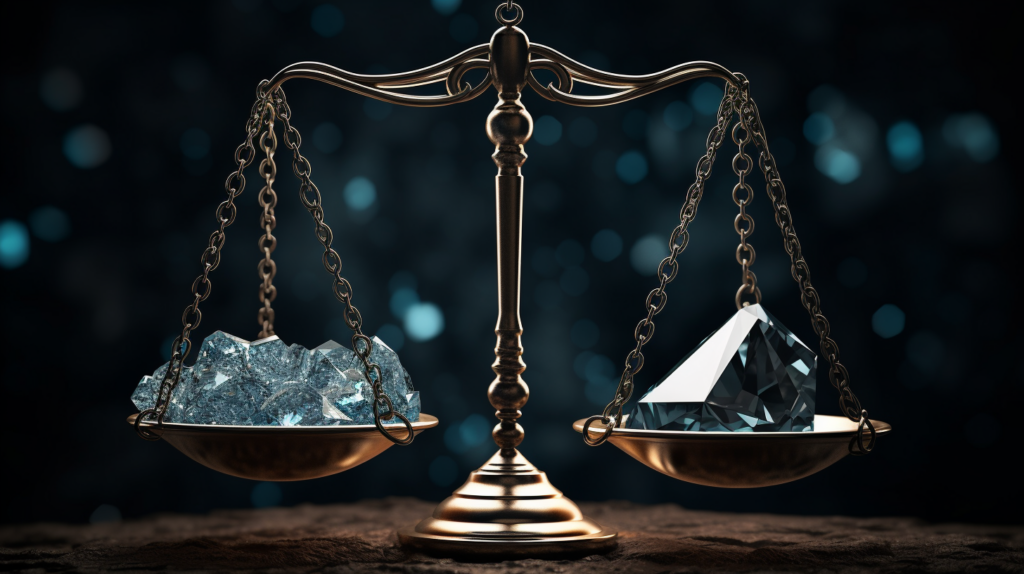
The Final Word
If lab-grown diamonds are on your radar, reflect on your individual needs and desires before taking the plunge.
While they present a more economical alternative, their resale value is minimal. Factors such as shape, cut, carat size, hue, and clarity play pivotal roles in the pricing equation. Recognize that while lab-grown diamonds might be a wallet-friendly option upfront, they don’t offer the same longevity in value as natural diamonds. If you’re eyeing an investment, a natural diamond, with its historically consistent appreciation, might be the better choice. But if your primary aim is to own a stunning diamond without spending a fortune and with a clear conscience regarding ethical and environmental concerns, a lab-grown diamond is a fantastic choice.
Sources
BrighterGuide is dedicated to providing accurate and relevant information as you explore the wonderful world of diamonds and jewelry. To this end, our writers refer to primary information sources in building each article that appears on this website. These include, but are not limited to, published news articles, government portals, research papers, and more.
- Laboratory-Grown Diamonds (Diamonds grown in a lab) | GIA. (2023b, September 15). GIA 4Cs. https://4cs.gia.edu/en-us/laboratory-grown-diamond/
- International Gem Society LLC. (2023e, May 22). Lab-Created Diamonds: The Ultimate Guide – International Gem Society. International Gem Society. https://www.gemsociety.org/article/lab-diamonds-buying-guide/